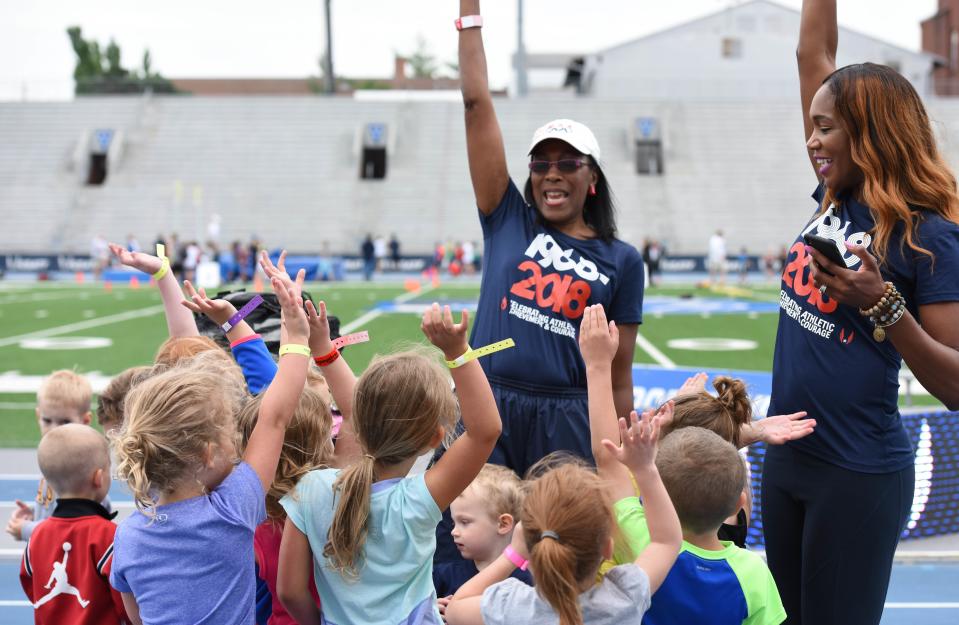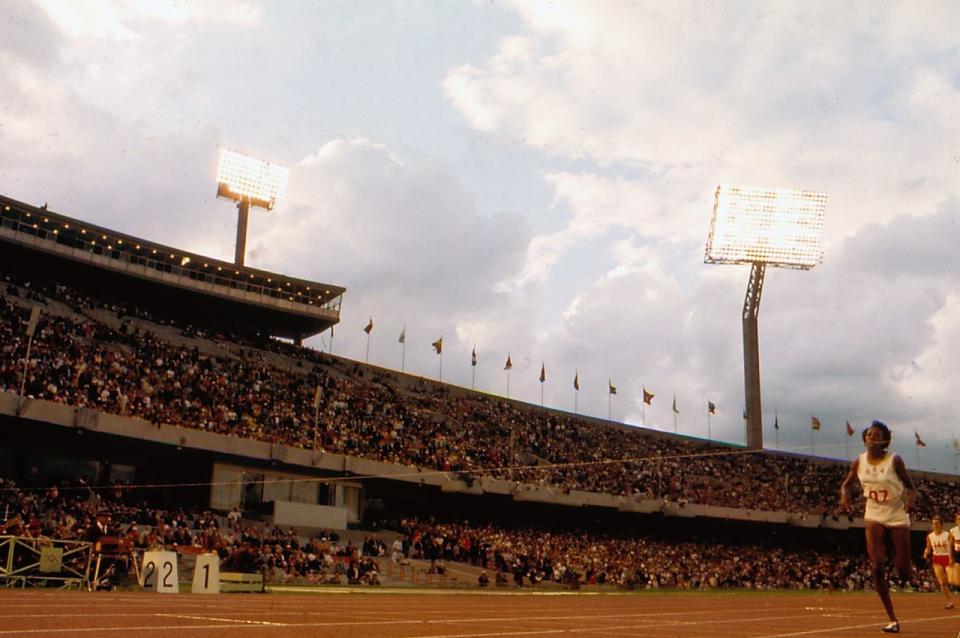50 Years After Winning Olympic Gold, Madeline Manning Mims Reflects on Her History-Making Moment
It’s been five decades since Madeline Manning Mims crossed the finish line of the women’s 800-meter race at the 1968 Olympic Games, winning the race by more than 10 meters and making history on multiple counts. Her time of 2:00.90 set a new Olympic record, and 20-year-old Mims became the first black woman to ever win the 800 meters. To this day, she remains the only American woman to ever earn Olympic gold in the event.
Yet all these years later, Mims, now 70, says the significance of that victory in Mexico City still hasn’t fully set in.
“I have not stopped to really reflect on this whole thing,” the four-time Olympian tells SELF as she prepares to join several of her '68 Olympic teammates at a special USA Track and Field “Night of Legends” event on December 1 in Columbus, Ohio. “It’s really kind of overwhelming. It’s humbling. I’ve looked at what’s happened in my life and now I can see how I helped shifted the ability for women of color to run long distances.”
Here, Mims shares her memories of the '68 Games, the early life challenges she overcame to make it there, her continued commitment to helping Olympic athletes, and more.
Responses have been condensed and edited for clarity.
SELF: Let’s talk about your victory in 1968. When you look back on that race, what stands out?
Mims: My mother and the gym teacher who first discovered me were standing about three tiers [up in the stands] from the finish line. When I came through, I heard my mother in the stadium hollering at the top of her lungs, "Praise the Lord, that’s my baby, that’s my baby!" She was crying and they were in each other’s arms. I looked up and connected with her and had one of those moments where I was like, Wow, I’m so glad you’re here.
SELF: What a special moment for you and your mom. The win obviously had much larger implications, too. What did that accomplishment mean to you at the time?
Mims: I didn’t think of it [as significant] at the time. I was too young—I was a sophomore in college, and these significant measures of history being made were not something that I could reflect on and connect with at the time.
SELF: When did you first understand the historical significance of that medal?
Mims: It wasn’t until a track and field world championships meet in the 80's when I met the Nigerian chef de mission [the person in charge of a national team at an international sports event]. A U.S. diplomat introduced us and he said, "I know very well who you are." I thought he was just being nice, but then he started sharing with me. He looked at me and said, "You are the one who has opened the door for women of color all over the world to start running long distances." [At the time, the 800 meters was considered a long-distance event.] That’s when it really hit me. Before then, I had no idea the broad impact of winning that gold medal.
SELF: Let’s talk about the events in your life that led you to that moment. You were diagnosed with spinal meningitis at age 3 and the doctors didn’t expect you to survive. Obviously you recovered, though you were quite sick until age 14. How did that early illness shape you as an athlete?
Mims: I was a very sickly little girl. I used to throw up a lot and every time that happened, my mom would call the doctor and he’d come give me a big shot. I hated getting that shot, so after I while, I started keeping the sickness to myself. I would quietly throw up and then continue doing what I was doing. I forced myself to push beyond the sickness. I didn’t realize it at the time, but that was making me stronger and stronger. I learned to overcome.
SELF: Your athletic talents were first discovered in high school gym class. You then played on the basketball, volleyball, and track teams. What were you like as a young athlete?
Mims: I was really disciplined. I always did more than was asked of me. After track and field practice, I would stay and do a few more runs by myself. I did the same thing with volleyball. I would stay for 2 to 3 hours after school and practice my serve over and over.
SELF: Who were some of your early influences?
Mims: I met Wilma Rudolph [American sprinter, world record holder, and medalist at the 1956 and 1960 Olympic games] at the 1967 Pan American Games. She said, "You are ready for that gold medal—now go out and get it." I stood there trembling and said, "Yes ma’am." Then, I met Jesse Owens [American sprinter and four-time Olympic medalist at the 1936 Olympic Games] at the 1968 Olympic Games. He was from my hometown of Cleveland and had heard about me. He gave me a hug and told me to go get the gold medal. If anyone made a huge impact in my life as far as athletics and character, aside from my high school and college coaches, it was those two.

SELF: Since winning Olympic gold, you’ve earned your Ph.D. in sports chaplaincy and have attended every Olympic Games as a sports chaplain since the late 80's, providing spiritual guidance to athletes. How did you get on that track?
Mims: I was selected as a captain of three of the four Olympic teams that I made, and I think it’s because I was always listening to, counseling, and supporting the other athletes. Things evolved from there and in 1988, I was asked to serve as part of the first U.S. Olympic chaplain team. It was a multi-faith team. In 2003, I started the United States Council for Sports Chaplaincy, a 501(c)(3) of which the purpose is to educate and train Christian chaplains to provide pastoral care at the Olympic and professional sports level.
SELF: In attending so many Olympic Games over the years, what are some of the biggest changes you’ve seen in the sport of track and field?
Mims: There have been so many changes—eating habits, training, the types of clothing and shoes. Also, the track itself is different. When I was first running, we had cinder tracks, which were hot and hard, and we ran on these big spikes. But the largest difference is the finances. The first time I got some type of per diem, it was $7 a day. Now the sport has become a vocation and that’s how athletes look at it.
SELF: What role does running and fitness play in your life today?
Mims: There’s a path out here [near Mims’s home in Tulsa, Oklahoma] where I can walk or jog half a mile a few times a week. I also do weight training, water workouts, and jazzercise tapes. At age 70, I know better than to do anything close to what I was trying to do [during my competitive days]. Yet still, my mind will sometimes just really want to go for it and I have to remember to use wisdom [and tell myself to keep it in check] because tomorrow you won’t be able to get out of bed.
SELF: Where do you keep your gold medal?
Mims: In my dresser drawer. I want to pass it down to my family line.
SELF: What advice do you give to young athletes today who want to be successful in their sport?
Mims: If you want to be a leader and the very best of the best, you have to be willing to pay the price. It doesn’t just come laid out on a platter—it comes with a lot of hard work, sweat, and tears.


